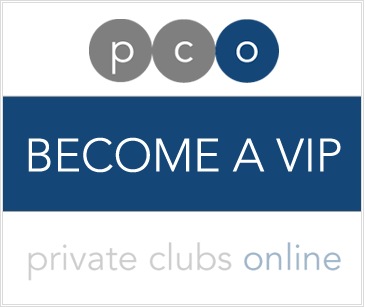When pressure builds, what do you tweet?
Running through my various lists of San Diego Sports Tweeps today, I came across this tweet from Bill Johnston, the PR Director for the San Diego Chargers.
Saying there's pressure on team to have great draft seems ridiculous considering we won't know results until year(s) down the road.
— Bill Johnston (@ChargersPRguy) April 25, 2012
I was a little surprised to see the PR Director tweet something so negative. Ridiculous? How is pressure for a great draft ridiculous? Or is it the fans who are ridiculous for putting the pressure on the team? I felt compelled to point this out to him. You can see here my response and his “save.”
@ChargersPRguy Ridiculous or just fanatical enthusiasm for a great @Chargers team/season in 2012? Fans can hope for a great draft. No?
— Shanna Bright (@shannabright) April 25, 2012
@shannabright Agree. Love it when people care. Just wanna WIN.
— Bill Johnston (@ChargersPRguy) April 25, 2012
This is a really great example of someone not taking that one extra moment to re-read a tweet before hitting the send button. With 6281+ followers, I suspect there are a few Chargers fans in the mix. Would Bill’s tweet have made a more positive impact had he posed a question?
“Who are you hoping the Chargers pick up in the NFL draft?”
Or could he have shed some light on the secret wishes of the players?
“The buzz in the locker room is that so-and-so is high on the wish list.”
To keep the communications in the positive zone, I responded with:
@ChargersPRguy We wanna WIN too! Do we know who fans are hoping for the most? What about the players? Very excited for the draft!
— Shanna Bright (@shannabright) April 25, 2012
Main point being, there was a good chance to engage fans and let them have a say, take a moment to interact. The comment/opinion from the PR Director only sets a stage for negative replies, as some might interpret him calling the fans ridiculous.
I’m all for being human and authentic, and certainly feel that even frustrations can be creatively vented online with a dash of humor and an open invite to comment. When you are a public figure, or sit in a position like the PR Director for a professional sports team, you really must remember that every time you post to Twitter, Facebook, LinkedIn, Pinterest or elsewhere, you really have to give second thought to how your post will resonate with your audience. For someone in Bill’s position, he should be able to turn what seems like a personal frustration into a positive interaction with Chargers fans. Furthermore, and no less significant, when the PR Director for a sports team sends tweets out a bit haphazardly, what kind of example does that set for the players and FO staff?
How do you think Bill should have tweeted his pressure-filled comment? What examples have you seen where a negative sentiment or frustrating situation is turned into a positive moment where fans feel included? Thanks for sharing your links in the comments!
Science of Social Media
Once of the best aspects of participating in social networks is that you meet some very interesting people and can learn a little something every day. Yesterday, I even participated in a Guinness World Record.
A few hours before the event, I received a reminder e-mail for a webinar on the Science of Social Media, sponsored by HubSpot. I follow HubSpot online and enjoy reading the e-mails which frequently land in my inbox. I’ve found them to be a good resource for news, tips and information about all sorts of online marketing and social network usage.
What made this one little webinar extraordinary was the level of participation. Over 30,000 people were online as students of this seminar. That’s the biggest webinar in the world to-date. Dan Zarrella, Social Scientist was the lecturer for the day. And on top of gaining bragging rights that I was a part of a historical event, I did end the hour with a few key takeaways.
Myths Debunked
1. MYTH – Ideas spread because they’re good.
The reality is that information spreads in an information void. Some bad ideas are spread across the web because there is simply nothing else out there of value or interest. Timing and luck have a bit to do with how wildly popular your message becomes.
2. MYTH – “Engaging in the Conversation” is the most important thing on social media.
“Publishing interesting content works,” says Zarrella. Simply conversing online doesn’t increase your value. Sharing pertinent information with critical timing (information void) does. This was followed by lots of data correlating tweets with links versus tweets without. Essentially, people who tweet lots of links have more followers, and therefore are perceived as more valuable.
While I can understand this argument, I do believe I believe that interesting content can be presented in a conversational tone and will land well with followers. Who wants to follow a news-only feed? I believe that building your personal brand online requires a personality. Engaging in conversation may not lend me more followers or be valuable to those who are already my friends, but it does show that I’m human and I play well with others.
3. MYTH – Don’t call yourself a guru.
The premise for this is that no one really wants to hear you exclaim that you are so wonderful and knowledgeable and fabulous. Where’s the humility? But research has shown that by including the words – official, founder, speaker, expert, guru, author – warrant above average followings. While that does not mean that I am going to list myself as a marketing maven in my bio anytime soon, it does encourage me to speak with authority. I do know what I’m doing, gosh darn it.
Understanding What Works and Why
A good chunk of the seminar discussed Zarrella’s upside down pyramid with the top-to-bottom listed words EXPOSURE, ATTENTION, MOTIVATION.
EXPOSURE refers to the amount of reach you have, your followers, likes , etc. Higher exposure is of course related to the likelihood that people will be exposed to your ideas and information. Increasing your exposure can be done by posting more interesting content. It can also be achieved by talking less about yourself. Data showed that the more you talk about yourself and the heavier the @ sign appeared in Tweets, the less followers one has. Again, content is king. And you, my dear, are not considered good content.
Gaining the ATTENTION of your followers is one of the more tricky aspects of social media. We have so much information coming at us on a daily basis, and have to quickly decipher what’s valuable and not. Research shows that those who update too frequently are tuned out by their audiences. Timing is everything, essentially. It would appear that people who update on a regular and consistent basis, like once per hour, are taken more seriously than those who tweet more than even five times in an hour, for example.
If you want to see what works best for your audience, then you have to play around a bit and document your best CTRs, most retweets, etc. Maybe your followers better receive information at 9:00pm when the kids have gone to bed. Perhaps frequent weekend updates will serve you better. You have to put in some effort to find what is best for your followers…that is who you want to reach, right?
Your performance and reputation have an effect on the MOTIVATION of your followers to share your content. How well you’ve grabbed their attention, the timing of your update, and how many others have already shared your information all play into how motivated your fan might be to share knowledge. While we cannot control who is the first to tweet that article or who clicks the first LIKE button, being the first is a motivation for some users to retweet and share links.
Increasing motivation is relative to HOW you speak to your followers. The KISS formula applies here. Keep it simple. Less adjective and adverbs and a healthy dose of nouns and verbs in your updates are better received, perceived as more valuable and help you look like an authority on the topic. Kindness counts too. Overly critical or mean-spirited comments will not fair well for you. We even discussed that the comment “Please Retweet” gains better results than “Please RT.” A polite call to action does work.
Takeaways
In addition to my notes above, it was clear to me that social media and the vast amount of online platforms are constantly evolving. It’s significant to check into these types of programs every so often so that we take time to listen to people who make a living by monitoring trends online. These notes will help me better plan my content, and has provided some great insight as to behavior and reaction online. I also managed to gain a few new Twitter followers in the process. I was thanking a few people for retweeting content I expressed during the seminar, which led to following each other. One reason I’m not willing to give up the conversational aspect of my stream.
You can follow Dan Zarrella on Twitter @DanZarrella
You can even watch the seminar and download the slides HERE if you’d like. Or you can go directly to the source, HUBSPOT.
If you do watch the seminar, I’d be interested to hear your thoughts and learn what takeaways you have from the program.
Get Bright Life E-News
Get free education and updates from Bright Life Media. E-news contains exclusive content for subscribers only. Say YES to a Bright Life now!





